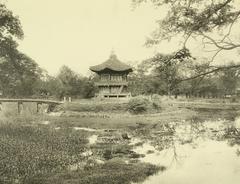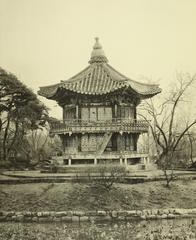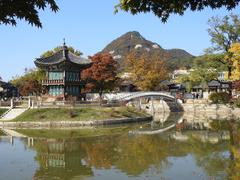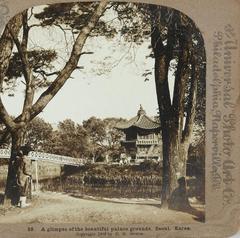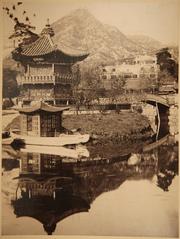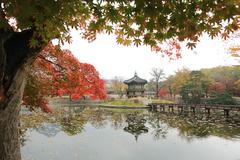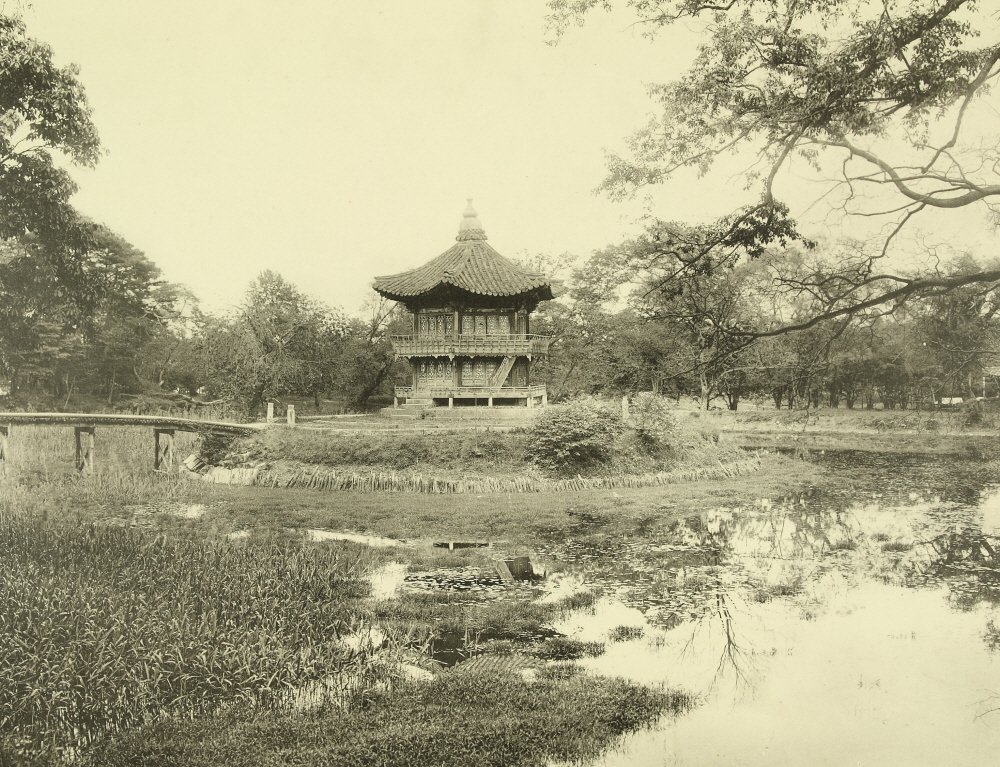
Hyangwonjeong Pavilion Seoul: Visiting Hours, Tickets, and Historical Sites Guide
Date: 15/06/2025
Introduction
Hyangwonjeong Pavilion, nestled within the historic Gyeongbokgung Palace in Seoul, is a masterful example of late Joseon Dynasty architecture and a tranquil retreat steeped in royal history. Known as the “Pavilion of Far-Reaching Fragrance,” it sits elegantly on a small artificial island in Hyangwonji Pond, connected by the iconic Chwihyanggyo Bridge. With its harmonious integration of nature and architectural ingenuity, Hyangwonjeong offers visitors a unique window into Korea’s royal past and the enduring beauty of traditional garden design. This guide provides everything you need to plan your visit—from historical context and architectural features to ticketing, accessibility, and travel tips.
Historical Overview and Cultural Significance
Origins and Construction
Commissioned by King Gojong around 1873, Hyangwonjeong Pavilion was envisioned as a secluded royal retreat for reflection and leisure. Its distinct hexagonal, two-story wooden structure embodies the Joseon Dynasty’s emphasis on harmony with nature and Confucian ideals of balanced living. The pavilion is strategically positioned on a small island in Hyangwonji Pond, accessible via the Chwihyanggyo Bridge, whose name, “Bridge Intoxicated with Fragrance,” alludes to the summer lotus blooms (Atlas Obscura; Korean Heritage Service).
Architectural Features
Hyangwonjeong’s rare hexagonal design maximizes panoramic views of the pond and surrounding gardens. Traditional Korean construction techniques—such as mortise-and-tenon joinery and the use of native pine—ensure both beauty and resilience. The pavilion’s roof features gracefully curving eaves and subtle dancheong (decorative painting), enhancing its natural setting. An innovative ondol heating system, discovered in recent years, demonstrates the adaptation of traditional technologies to the building’s compact form (I Wanderlista).
Chwihyanggyo Bridge and Restoration
The original Chwihyanggyo Bridge, the longest wooden bridge built over a pond in the Joseon era, was destroyed during the Korean War and subsequently restored. In 2019, preservationists returned the bridge to its northern location, restoring the pavilion’s historical approach (Korean Heritage Service).
Symbolism and Cultural Impact
The pavilion’s name and setting evoke both the literal fragrance of lotus blossoms and the metaphorical spread of virtue and tranquility. Hyangwonjeong has inspired poets, artists, and travelers alike, appearing frequently in Korean art and literature. The pond’s lotus and carp, along with the reflective waters, reinforce the site’s contemplative atmosphere (Korea Compass).
Preservation
Designated as National Treasure No. 1761, Hyangwonjeong is the focus of ongoing restoration and preservation efforts using traditional materials and craftsmanship. Historical records help guide these projects to maintain authenticity (Visit Seoul).
Practical Visitor Information
Opening Hours
| Season | Opening Hours | Last Admission |
|---|---|---|
| November–February | 09:00–17:00 | 16:00 |
| March–May & Sept–Oct | 09:00–18:00 | 17:00 |
| June–August | 09:00–18:30 | 17:30 |
Closed on Tuesdays except public holidays (Visit Korea).
Ticket Prices
- Adults: 3,000 KRW
- Children (7–18): 1,500 KRW
- Free Entry: Visitors wearing hanbok or on the last Wednesday of each month
- Royal Palace Pass: 10,000 KRW for access to all five major palaces (ticket4twoplease.com)
- Tickets: Purchase at the main entrance; hanbok rentals available nearby
Accessibility
- Entrances and Paths: Main entrance is step-free; some gravel and stone paths may be challenging
- Wheelchair/Stroller Rentals: Available at the information center (Seoul Danurim)
- Accessible Restrooms: Located near major halls
- Braille and Sign Language: Braille maps and sign language commentary via QR codes
- Parking: Accessible parking available near the entrance
Getting There
- Subway: Gyeongbokgung Station (Line 3), Exit 5 (short step-free walk); Gwanghwamun Station (Line 5) also nearby
- Bus: Multiple lines (e.g., 1020, 1711, 109, 171, 172, 601)
- Taxi/Ride-Hailing: Kakao Taxi and Uber widely available; drivers familiar with the palace location
Inside Gyeongbokgung Palace: Navigating to Hyangwonjeong
After entering through Gwanghwamun Gate, follow the main axis northward, passing Geunjeongjeon and Gyeonghoeru Pavilion. Hyangwonjeong lies at the northern end, signposted in multiple languages. Free palace maps are available (worldxplorr.com).
Notable Features and Visitor Experience
- Hyangwonji Pond: Home to seasonal lotus blooms and colorful carp; reflections of the pavilion offer stunning photo opportunities (Atlas Obscura)
- Chwihyanggyo Bridge: Generally closed to foot traffic to preserve the structure, but visible from the pond’s edge (Where Are Those Morgans)
- Photography: Best light in early morning or late afternoon; capture the pavilion with Bugaksan Mountain backdrop (tripologist.com)
- Hanbok Experience: Rent traditional attire for photos and free entry (chargetheglobe.com)
- Guided Tours: Free English tours daily (except Tuesday), starting at Heungnyemun Gate; other languages also available (ticket4twoplease.com)
Special Experiences
- Gyeongbokgung Starlight Tour: Nighttime tours with traditional performances and royal cuisine (Korea Heritage Agency)
- Royal Guard Changing Ceremony: Regular reenactments at the main gate (Korea Heritage Agency)
Accessibility and Visitor Facilities
- Restrooms: Modern and accessible near major halls
- Seating: Benches and shaded areas around Hyangwonji Pond
- Family Facilities: Nursing room and diaper changing stations at main entrance
- Luggage Lockers: Available at the National Museum of Korean Contemporary History (Visit Seoul)
Dress Code and Visitor Etiquette
- Modest clothing recommended; avoid shorts and sleeveless tops
- Hanbok rental adds to the experience and provides free entry
- No food or drink except in designated areas
- Respect signage and do not touch or climb on historical structures
Nearby Attractions
Within Gyeongbokgung Palace
- Gyeonghoeru Pavilion: Royal banquet hall on a pond
- Geunjeongjeon Hall: Main throne hall
- National Folk Museum of Korea: Cultural exhibits
- National Palace Museum of Korea: Royal artifacts
Walkable Destinations
- Bukchon Hanok Village: Traditional homes and workshops (Korea Travel Guide)
- Insadong: Teahouses, galleries, street food (Hey Roseanne)
- Gwanghwamun Square: Public plaza with statues and events
- Changgyeonggung and Changdeokgung Palaces: Gardens and the Secret Garden (Visit Seoul)
Tips for a Smooth Visit
- Best Seasons: Spring (cherry blossoms) and autumn (foliage); winter offers peaceful snowy scenes
- Visit Duration: Plan for 2–3 hours at the palace, more if exploring nearby sites
- Travel Apps: Download the Audiala app for audio guides and latest updates
- Photography: Early or late visits avoid crowds and offer optimal lighting
Frequently Asked Questions (FAQ)
Q: What are the visiting hours for Hyangwonjeong Pavilion?
A: Hours follow Gyeongbokgung Palace’s seasonal schedule. Closed on Tuesdays, except public holidays.
Q: How much are tickets?
A: 3,000 KRW for adults, 1,500 KRW for children. Free with hanbok or on the last Wednesday of each month.
Q: Is Hyangwonjeong Pavilion wheelchair accessible?
A: Ramps and rentals are available, but some gravel and stone paths may be challenging.
Q: Can I enter the pavilion or cross the bridge?
A: Entry is restricted to protect the structures; enjoy views from the pond’s edge.
Q: Are guided tours available?
A: Yes, free tours in English and other languages; check the information center for schedules.
Q: Can I take photos?
A: Photography is allowed (no drones). Morning or late afternoon is best for photos.
Contact and Location
- Address: 161 Sajik-ro, Jongno-gu, Seoul, South Korea (Visit Korea)
- Phone: +82-2-3700-3900
- Official Website: royal.khs.go.kr
- Accessibility Info: Seoul Danurim
Conclusion
Hyangwonjeong Pavilion stands as a quintessential symbol of Korea’s royal heritage, blending exquisite architecture with tranquil natural beauty. Whether you’re drawn by history, culture, or photography, a thoughtfully planned visit—taking advantage of guided tours, hanbok rentals, and nearby attractions—will ensure a memorable experience. For up-to-date details, consult official resources and consider using the Audiala app.
Enhance your journey: Download Audiala for audio guides and interactive tours, and follow us on social media for the latest on Seoul’s historic gems.
References and Official Resources
- Atlas Obscura
- Korean Heritage Service
- Hey Roseanne
- Seoul Danurim
- Tripologist
- Korea Compass
- Visit Seoul
- Korea Heritage Agency
- Visit Korea
- Chargetheglobe.com
- Ticket4twoplease.com
- Worldxplorr.com
- Where Are Those Morgans
- Korea Travel Guide
